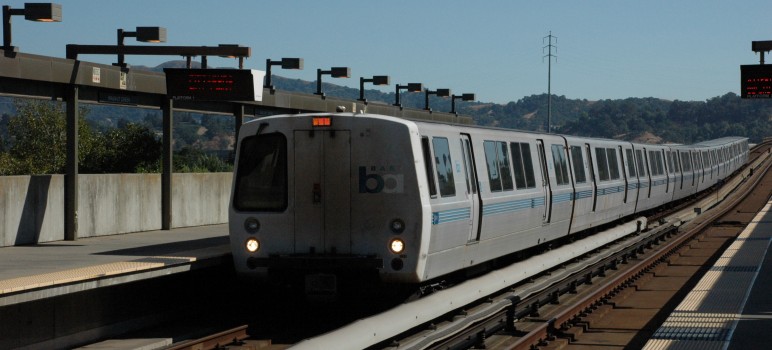Roughly three-quarters of BART riders were satisfied with the transit agency’s service in 2020, an increase of almost 30 percent over 2018, according to the results of a survey the agency released on Thursday.
BART received responses from some 3,000 riders for its biennial customer satisfaction survey, which found that 72 percent of riders were very or somewhat satisfied with the regional transit agency compared to 56 percent during the 2018 survey. Nine percent of riders were dissatisfied with BART in 2020, compared to 21 percent in 2018.
The 2020 version of the survey, fielded over a span of three weeks in October, reached 2,325 fewer riders than the 2018 version, due in part to an 88 percent decrease in ridership and a result, in large part, to the coronavirus pandemic.
With the transit agency’s ridership now skewing more toward essential and transit-dependent workers, 75 percent of 2020 survey participants identified as non-white and 51 percent reported household incomes of less than $50,000. In 2018, those numbers were 65 percent and 25 percent, respectively.
The survey’s findings were presented to BART's Board of Directors Thursday morning.
“These riders who took the survey, they are the riders who depend on BART the most,” Board Director Rebecca Saltzman said. “They're primarily essential workers or people taking essential trips to doctor's appointments.”
The survey found that 23 percent of BART’s ridership would be unable to make their trips without the agency’s service and 53 percent of riders do not own a car or motorcycle, up from 31 percent in 2018.
Riders criticized BART most frequently on the survey for the agency’s efforts to address fare evasion and unhoused residents at stations, the presence of BART police officers and general personal security.
Board Director Janice Li suggested that issues of personal safety and security could be assuaged once BART’s unarmed crisis intervention ambassadors are riding aboard every train during all hours of operation.
Li also argued that some riders may unfairly conflate unhoused residents at BART stations and public safety concerns.
“Folks in the public make assumptions that people are homeless, experiencing homelessness, are the same folks that are causing issues with public safety, which are the same folks who are fare evading,” she said. “I don’t believe that’s true at all.”
BART riders gave the agency somewhat positive marks for its efforts to keep trains safe since the start of the pandemic, with 79 percent of riders attesting that they were able to maintain at least six feet of distance from others for the entirety of their ride.
Mask wearing is also mandated among all BART employees and riders, but some survey-takers argued that mask use is not enforced aboard trains as much as it should be.
“We hear those complaints, which is why we continue to work with staff to ensure that we are keeping our riders and our workers as safe as possible,” Li said.


> BART Riders More Satisfied With Service During Pandemic
See! I told you so!
The Pandemic was a good thing and not a bad thing.
Raises for all the BART workers!
Poor of San Jose I call you!
This is what is called a propaganda piece. They bias the sample, as ridership is so low, and capture one statistc that will be repeated to convince you that living in Antioch is actually better than living in San Jose. Because look, BART riders are satisfied.
Its coming, there will be no playing, the cities and states need to secure revenues for these pensions. Ask yourself, do you spend enough on sales tax and does your rental generate enough property tax to pay for what they spend on your family plus cover you part of the 35% of the pensions that are unfunded?
Well the city and state will have to do something to change that, and that time is now.
BART riders more satisfied
Specifically, crowding levels were found less unpleasant than in past surveys.
Crime and filth have also rated lower, possibly from fewer criminals at, on BART
(Fewer victims or persons to accost, reduced opportunities to benefit)
Now, with crowding stats, VTA light rail use is so low, improvement is trivial.